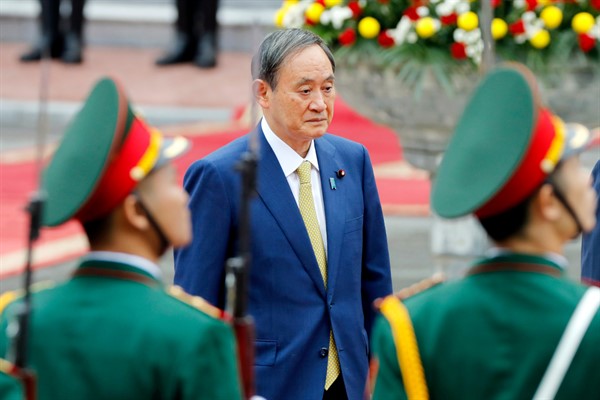When Abe Shinzo abruptly announced he was stepping down as prime minister this summer due to health concerns, it marked an important turning point for Japan’s position on the world stage. The longest-serving prime minister in Japanese history, Abe began his second term in 2012, guiding the country through a period of global turmoil while maintaining a rigorous travel schedule. He championed multilateralism, free trade and a rules-based order at a time when many other countries were being buffeted by great-power politics and the rise of authoritarian populism. And while Abe’s ambitious foreign policy agenda often missed its mark, he still left behind a number of important accomplishments and a reservoir of goodwill among his fellow world leaders.
No one is better-positioned to benefit from that legacy than Suga Yoshihide, whom the ruling Liberal Democratic Party selected as the new prime minister in September. One of Abe’s most loyal advisers, Suga served for years as chief Cabinet secretary, an important position that entails coordinating the various arms of Japan’s bureaucracy, but which gave him little diplomatic experience. He doesn’t speak English, and lacks Abe’s charisma and outgoing personality. In his first major speech to parliament last month, he outlined some important domestic reform initiatives, including a pledge to achieve net-zero carbon emissions by 2050. But on foreign policy, it was clear that he intends to follow Abe’s blueprint.
So far, that strategy has served Suga relatively well. For his first official trip overseas last month, he traveled to Vietnam and Indonesia, two countries that were also on Abe’s itinerary for his maiden voyage as prime minister in 2013. Abe then went on to visit all 10 members of the Association of Southeast Asian Nations within his first year in office, and his economic outreach to the region became a major pillar of his trademark vision for a “free and open Indo-Pacific,” designed to build a rules-based coalition of nations that counterbalances China’s rising economic and military might.

